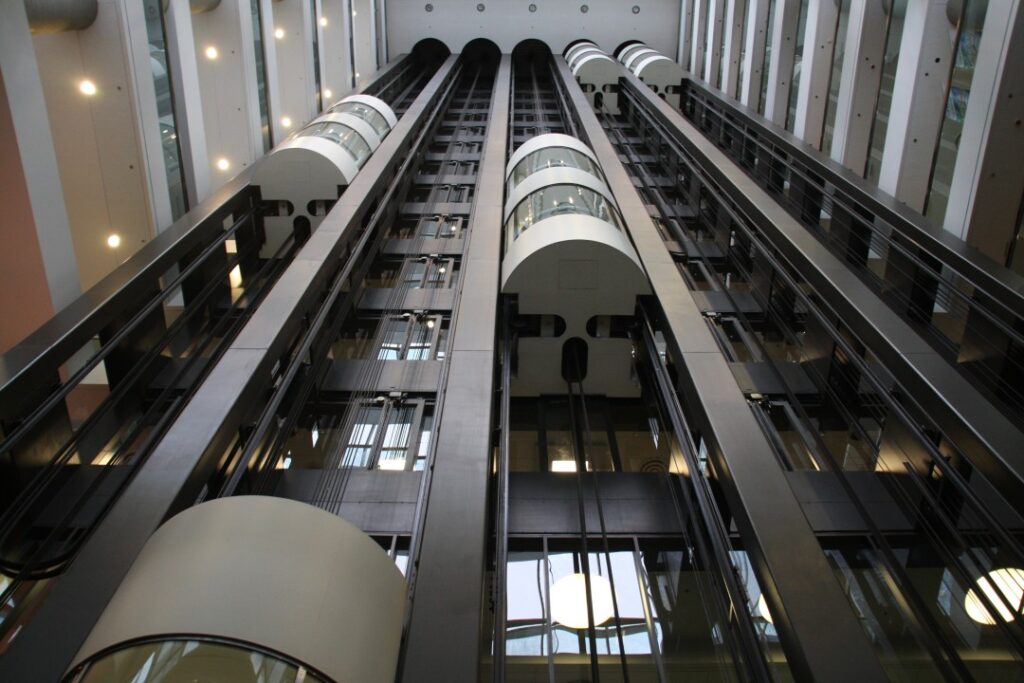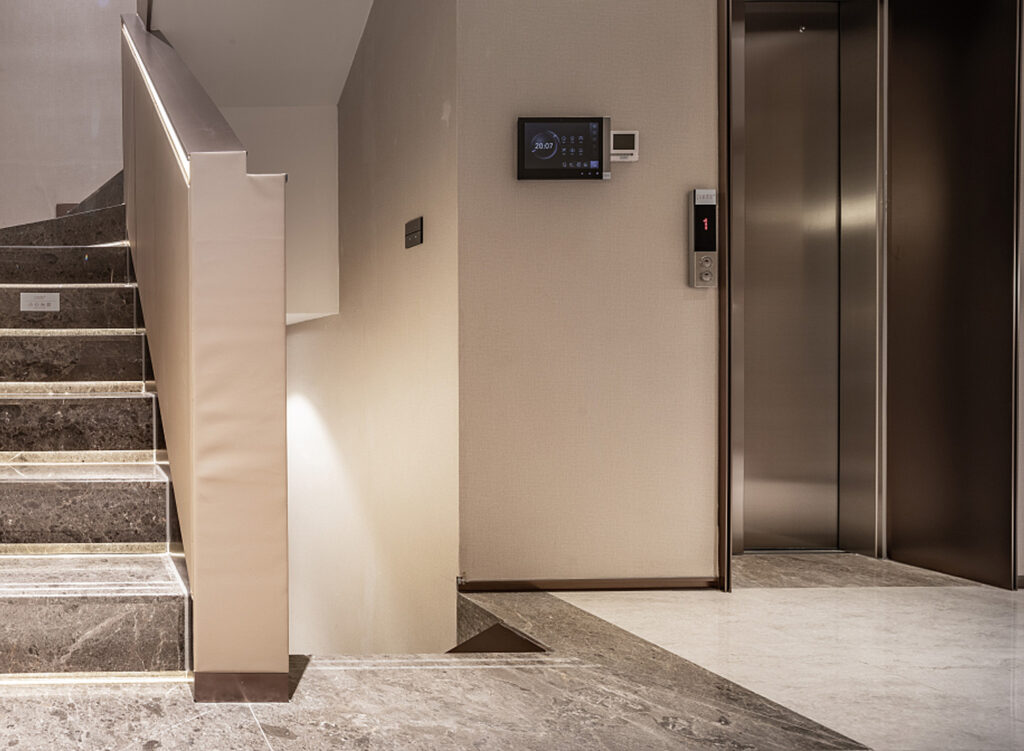Understanding Different Types of Elevators
Understanding the different types of elevators is crucial for safety, efficiency, maintenance, and accessibility. Elevators vary in safety features, speed, capacity, energy efficiency, maintenance requirements, and accessibility. Knowing these differences helps building owners and managers choose the right type of elevator for their needs. It also helps them improve efficiency, prevent costly breakdowns and repairs, and ensure accessibility for people with disabilities.
مصعد عالي الارتفاع
High Rise Elevators are vertical transportation systems specifically designed for buildings with multiple floors, particularly high-rise buildings. They are responsible for moving people and goods quickly and efficiently between floors, saving valuable time and reducing physical exertion.

مصعد متوسط الارتفاع
Mid-rise elevators are vertical transportation systems designed to move people or goods between floors in buildings that are typically 5 to 12 stories tall. These elevators are generally smaller and slower than high-rise ones, designed for taller buildings.

مصعد منخفض الارتفاع
Low-rise elevators are small-scale vertical transportation systems designed for buildings with few floors, typically 2 to 4. These elevators are ideal for low-rise residential, commercial, and institutional buildings where space and budget constraints are a concern.

Comparison of High Rise, Mid Rise, and Low Rise Elevators
Differences In Design and Operation
- High-rise elevators are designed to transport people and goods to great heights, requiring more advanced technology, such as high-speed elevators and more substantial building infrastructure.
- Mid-rise elevators are designed to operate at moderate speeds and can be used in buildings up to 12 stories high.
- Low-rise elevators are designed for buildings up to 4 stories high and typically operate slower than mid and high-rise elevators.
Differences In Cost and Maintenance
- High-rise elevators are typically the most expensive to install and maintain due to their advanced technology and stronger infrastructure requirements.
- Mid-rise elevators are less expensive than high-rise ones but more expensive than low-rise ones due to their higher capacity and moderate speed.
- Low-rise elevators are the least expensive to install and maintain, typically only requiring essential maintenance and repairs.
Machine Room or Machine Room Less?
High-speed elevators and heavy-duty elevators can only be selected with machine rooms. As for other elevators with or without machine room, it depends on the building space and demand.

خاتمة
In conclusion, there are distinct differences between high-rise, mid-rise, and low-rise elevators. High-rise elevators are designed for tall buildings, usually with more than 12 floors, and can travel at higher speeds to move people efficiently. Mid-rise elevators are typically used in buildings with 5 to 12 floors and are designed to transport passengers comfortably and efficiently. Low-rise elevators are used in buildings with less than four floors and are typically slower and less complex than their counterparts.
At Dazen Elevators, we offer a wide range of elevators, like passenger, home, panoramic, hospital, and freight elevators, which can all be modified for low-rise, mid-rise, and high-rise use. With our range of elevator options and customization capabilities, we can meet your building’s vertical transportation needs efficiently and effectively. For more information about مصعد دازن and our products and services, please اتصل بنا by phone or email.

